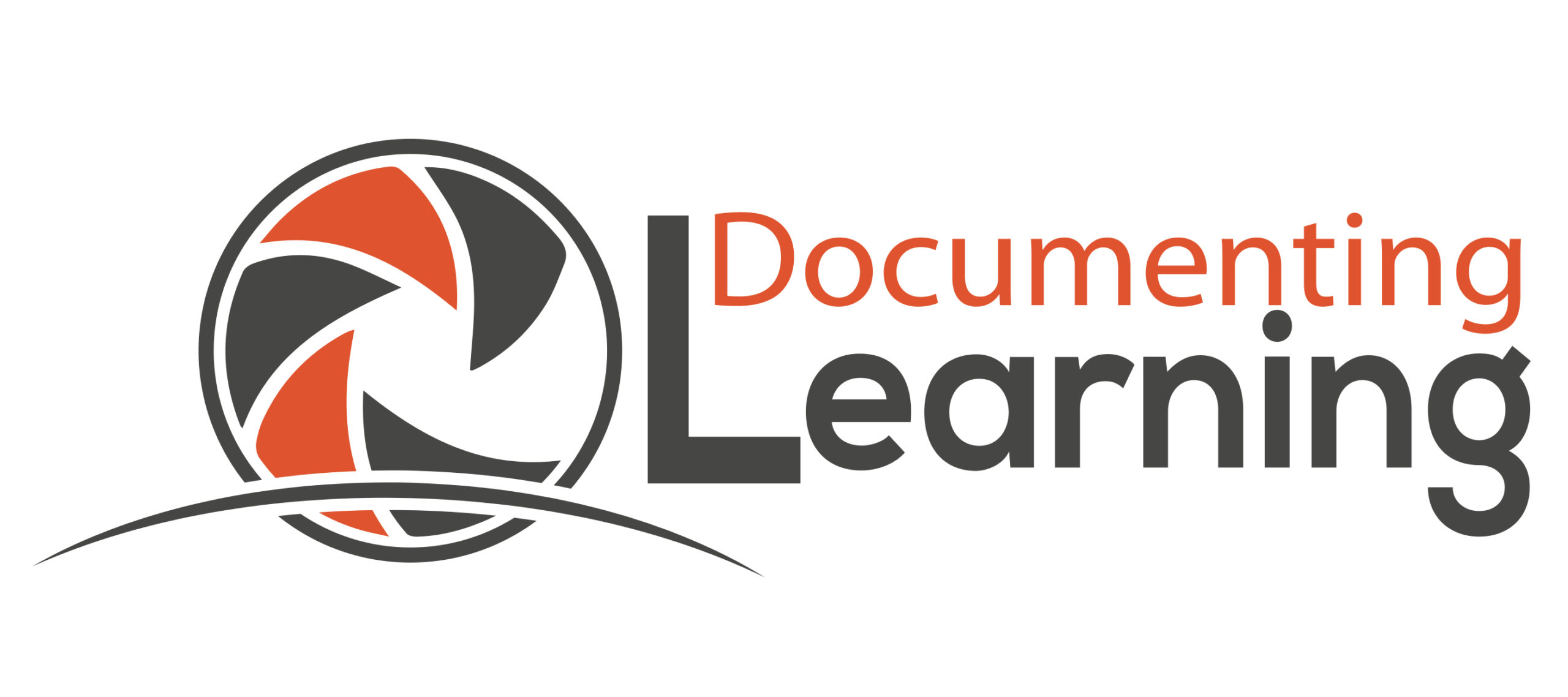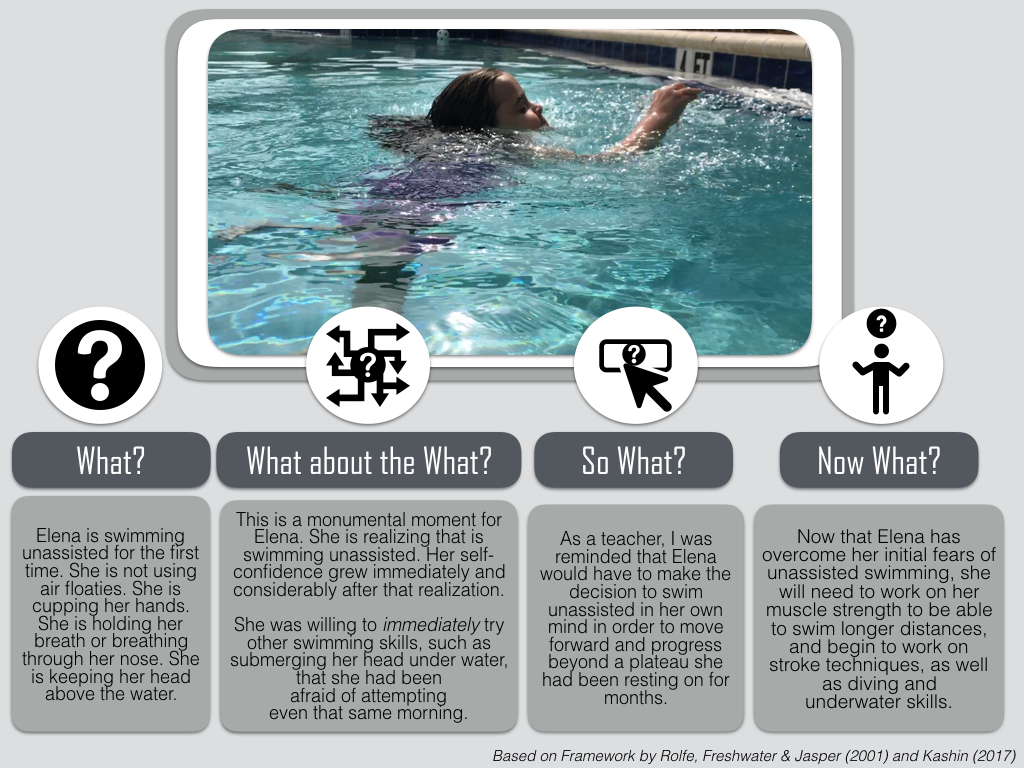Chapter 10 Documenting with Unpacking in Mind
1. Unpacking refers to the decision-making regarding the usefulness of captured documentation, and analyzing media to determine and inform learners of their current capabilities. Colleagues and other educational professionals may use a different term that has the same meaning.
Kashin (2017) features four questions based on, “The framework proposed by Rolfe, Freshwater, & Jasper (2001) and serve[s] as a guide for reflection to support the process of meaning making,” which need to be discussed when documenting learning in early learning (and all) environments:
- What? This is an objective question that asks you to describe what you saw or heard.
- What about the What? – This is a reflective question that asks you to consider why you choose to record and document a particular situation. How did it make you feel? As you examine the documentation, what makes you smile or what tugs at your heartstrings?
- So What? – This is an interpretative question. What are you learning about the child’s learning processes and what are you learning about your own teaching? How does this situation connect to the child’s prior experience or knowledge? How does it connect to your prior experience or knowledge?
- Now What? – This is a decision question. Where will you go next? How will this inform your practice? How will you use your knowledge/experience to plan for the children’s indoor and outdoor play experiences or to plan for a long-term project investigation?
Did you notice Kashin refers to the second question as reflective and to the third question as interpretative? The what about the what and the so what questions correlate to the post- documentation phase’s unpacking process.
Read: What about the What? Finding the Deeper Meaning in Pedagogical Documentation.
Look at your cellphone photo gallery. Have you recently taken a photograph of your classroom, students, family, or friends? If you have not, take a photo in the next few hours or days. Then go through the four questions and answer them based on the image you captured. Share your answers with a colleague, create an infographic, or write reflective blog post. Image DQ.4 is an unpacked artifact of Silvia’s granddaughter’s first unassisted swimming experience.
Remember to pixelate your students’ faces to protect their identity, if using a school-based photograph. If you share your unpacked artifact with greater amplification degrees in mind (e.g., blog post, Instagram, Facebook, Twitter), include the #documenting4learning hashtag on Twitter, Facebook or Instagram; or by mentioning @documenting4learning on Facebook and Instagram, and @doc4learning on Twitter.
2. Read through the Twitter feed from a Documenting FOR Learning chat hosted by #amplifiEDU. What patterns or trends do you notice? What does a particular pattern or trend cause you to reflect upon when considering your classroom or professional documenting learning practices?
Share your thoughts with a colleague who is reading this book with you, or by posting a reflective comment on Twitter using the hashtags #documenting4learning and #amplifiEDU.
Is there a particular contributor in this #amplifiEDU feed that you would like to contact to ask a question, or learn more about what he or she shared? Assuming you are not being followed by this contributor, reach out by mentioning his or her @handle in your Twitter post. He or she will be notified because you mentioned his or her username, and will most likely respond quickly to your inquiry or question.

